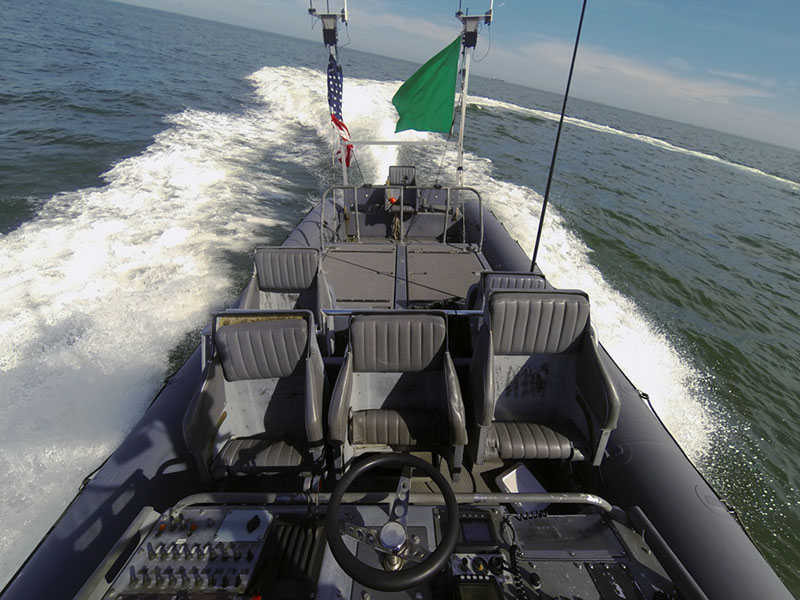War Without Fear: DepSecDef Work On How AI Changes Conflict
Posted on
APPLIED PHYSICS LABORATORY: “Brothers and sisters, my name is Bob Work, and I have sinned,” the Deputy Secretary of Defense said to laughter. There’s widespread agreement in the military that artificial intelligence, robotics, and human-machine teaming will change the way that war is waged, Work told an AI conference here Thursday, “but I am starting… Keep reading →
The War Algorithm: The Pentagon’s Bet On The Future Of War
Posted on
Thinking about robots and war often brings to mind HAL, the apparently well-meaning but ultimately destructive computer in 2001, or the metallic creatures of death in the Terminator series. Today, however, the Pentagon wants to push the concept in a different direction. With advanced adversaries like Russia and China copying the smart weapons, stealth fighters, and… Keep reading →
Lockheed Exoskeleton Gives Troops A Leg Up, Literally
Posted on
It is not Iron Man. It isn’t even Iron Fist. Lockheed Martin’s newest exoskeleton is more like Iron Leg. But for a soldier humping his weapons, ammo and body armor up a mountain in Afghanistan or a high-rise building in a future urban battle, a device to take the load off would be welcome. And, unlike… Keep reading →
‘Algorithmic Warfare:’ DSD Work Unleashes AI On Intel Data
Posted on
WASHINGTON: The technophilic Deputy Defense Secretary, Bob Work, just stood up a task force to advance the use of artificial intelligence in military intelligence. This is not SkyNet, an AI with its finger on the launch button. Instead, the first project for this Algorithmic Warfare Cross-Functional Team will be developing AI to sort through vast… Keep reading →
Forget The Terminator; Suicide & Data Drones Are Future, Says SCO’s Roper
Posted on
AFA HQ: William Roper, the man who’s helping shape that future at the well-named Strategic Capabilities Office, told a packed room here that “stealth won’t last forever;” that adapting to the new version of war he’s helping the country ready for “is going to be harder for the Air Force than the other services;” that… Keep reading →
MDC2: Air Force Works On Huge Command, Control System; Allies Key
Posted on
ORLANDO: Want to defeat an enemy? Get inside his decision cycle. Hammer away at his forces, confuse his command, steal his intelligence. Sun Tzu said most of it ages ago, but it remains true today. The key to such success is, first, understanding what you and the enemy are doing and, second, communicating that understanding to… Keep reading →
Best Of 2016: Rise Of The Robots
Posted on
How does war change when your weapons can think? Do you trust a computer to decide when and whom to kill? Questions once asked only in science fiction are now becoming matters for policymakers. All four armed services are experimenting with artificial intelligence in every domain: land, sea, air, outer space, cyberspace, and the all-pervasive… Keep reading →
Swarm 2: The Navy’s Robotic Hive Mind
Posted on
Robot boats are getting smarter fast. Two years ago, on the James River, the Office of Naval Research dropped jaws with a “swarm” of 13 unmanned craft that could detect threats and react to them without human intervention. This fall, on the Chesapeake Bay, ONR tested ro-boats with dramatically upgraded software. The Navy called this… Keep reading →
Trump Vs. Pentagon: Is F-35 Really ‘Out Of Control’?
Posted on
WASHINGTON: Just hours after the President-Elect tweeted F-35 costs were “out of control,” sending manufacturer Lockheed Martin‘s stock price into a nosedive, the first two F-35s to be based abroad landed in their new home country, Israel. Is the famously hard-nosed Israeli Defense Force deceived about what they’re getting for their money? Or is the… Keep reading →
F-22, F-35 Outsmart Test Ranges, AWACS
Posted on
CAPITOL HILL: How smart is too smart? When F-35 Joint Strike Fighters flew simulated combat missions around Eglin Air Force Base in Florida, their pilots couldn’t see the “enemy” radars on their screens. Why? The F-35s’ on-board computers analyzed data from the airplanes’ various sensors, compared the readings to known threats, and figured out the… Keep reading →










